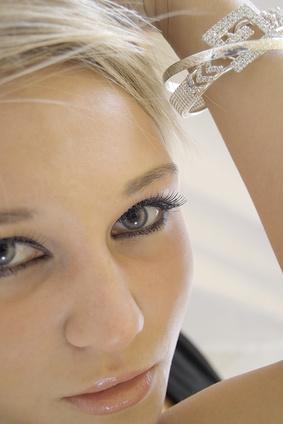If you have acne, many treatment options are available to you. Typically, severe acne treatment begins with prescription creams and antibiotics, according to MayoClinic.com. If you don’t respond to traditional acne treatment, you may want to consider laser treatment. Laser and light treatments are still new, however, and doctors, as of 2010, do not routinely prescribe them.
Types of Laser and Light Treatments
The best-known light therapy for acne is blue-light therapy, which the U.S. Food and Drug Administration approves. Blue light works by killing the bacteria responsible for causing acne. Blue light does not contain damaging ultraviolet light, as light therapies once did.
Pulsed light and heat energy therapy uses green light to kill bacteria and heat to shrink the sebaceous glands, responsible for sebum.
ALA plus light therapy is a two-step process where patients first apply the ALA medication, which increases their sensitivity to light. Then, the patient removes the medication, and the doctor uses red or blue light therapy on the acne.
A diode laser can destroy sebaceous glands without harming the outer layer of skin.
Procedures for Laser and Light Treatments
Patients receive blue-light therapy in increments, which are generally eight 15-minute sessions over a four-week period.
With pulsed light and heat energy therapy, patients receive two treatments per week for four weeks.
With the diode laser, patients saw a reduction in acne after one treatment. By the third treatment, their acne was 83 percent decreased.
Side Effects
Side effects of blue-light therapy include temporary skin pigment changes, swelling of the areas treated and dryness.
With the ALA plus light therapy treatment, the patient’s skin will be very sensitive to the sun for 48 hours. Use of the red light with this therapy produces temporary darkening of the skin and an inflammation of hair follicles.
The diode laser is a painful treatment, but patients seemed to tolerate it when a doctor applied a topical anesthetic first. Patients can also expect to have temporary redness and swelling at the treatment sites.
Success
Results on a small group of patients showed success with blue-light therapy. However, in the long term, this treatment may not be better than using a topical anti-bacterial cream, according to the Acne Net website. Plus, the studies are simply too small to make any valid conclusions.
Pulsed light and heat energy therapy looks promising in the small, 19-patient study that researchers conducted as reported on the Acne Net website. They conclude, based on that small study, that this technology is safe and effective.
Researchers conclude that blue light therapy used with ALA may be suitable but not with red light.
Success is promising with the diode laser. In one 19-patient study, every patient saw a reduction in acne.
More Research Needed
Although laser and light treatments show promise in treating acne, too much is unknown about these technologies. Clinicians need to conduct more studies to perfect these treatments, according to the Acne Net website. Researchers need to find out which type of therapy is best for which patient, they need to evaluate the effectiveness of each therapy on larger groups of patients, they need to determine the long-term effects of laser and light treatments, and they need to determine if the results last after the treatment ends.
Photo Credit
- face to face image by Melanie von Snarly from Fotolia.com





